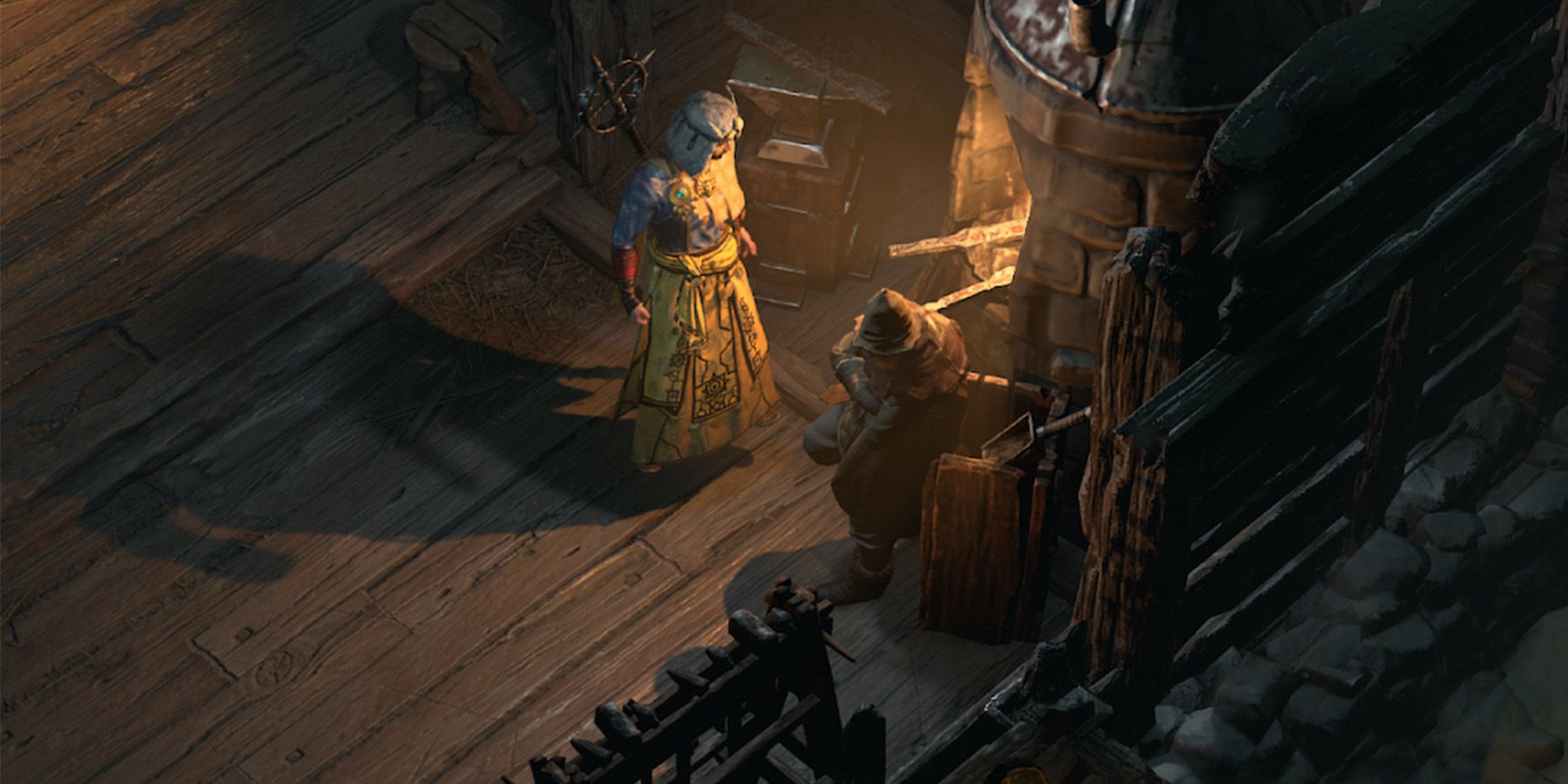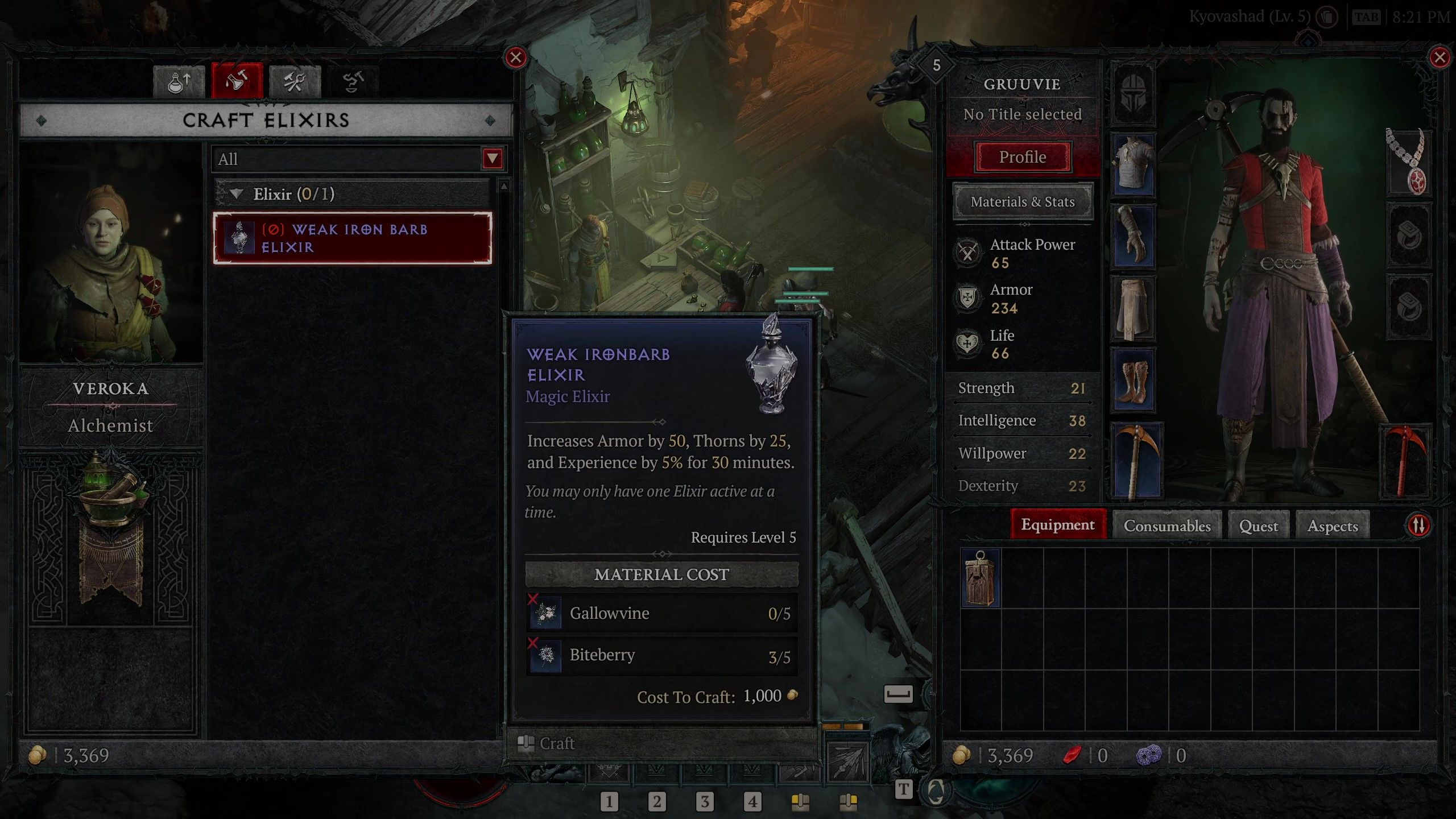There are a lot of new mechanics in Diablo 4 that fans of the series – and of other ARPGs – might not be familiar with. One of these new systems takes from the open world and MMO genres that Diablo 4 adopted for its release: crafting, using materials found from the environment and other sources throughout Sanctuary, is a staple of this ARPG.
Another major part of Diablo 4 is side quests, which typically reward players with a Cache of materials upon completion, with Salvage and Herb caches being particularly common. Players who wonder what to do with Salvage and Herb caches are in luck: the game's crafting systems depend on materials gained from these containers, and it's a simple process to crack them open.
Where To Get Salvage and Herb Caches
Though players can certainly wander around the five zones of Diablo 4 and collect materials as they go, rarer, more varied materials drop from the respective Salvage and Herb caches. These items can be found by completing quests out in the world, and every zone has dozens for players to discover. Head to one of the major capitals to get started with side quests in a region, which also progresses the Renown meter by 20 for each completed quest.
The game has a pretty good variety of content that these side quests tie into, and if players don't skip the dialogue the stories can be pretty engaging (especially in the Fractured Peaks). Most of the non-Story-related Diablo 4 quests (marked with a blue exclamation point on the world map) will reward a Cache alongside Gold, XP, and sometimes even other unique goodies. There are other types of Caches that can be earned this way, and they can be opened the same way Herb and Salvage Caches can.
Open Caches as soon as you get them, as they take up an inventory slot, but the materials contained within do not and are added to the materials inventory automatically.
What To Do With Salvage & Herb Caches
After completing a side quest, and getting a Cache in your inventory, it's a simple process of opening it up to see what's inside. In the inventory screen, scroll over to the Cache, which should resemble a wooden box with a blue background. On PC, players can simply right-click a Salvage or Herb Cache to open it up. On Xbox and PlayStation controllers, press either A or X to select the cache, then scroll down to "Open".
The contents should spill onto the ground, and automatically be added to one's materials inventory after walking over them. To see your materials in the inventory, just click in R3 (the right analog stick) while hovering over your character's stats (on PC, just press the Materials tab).
There are multiple types of crafting, but for the most part, players interact with two more than others: Blacksmithing, for weapon upgrades, and Alchemy, for potions and buffs. Salvage and Herb caches will always drop materials used in these two professions. After appearing on the ground, these items are automatically added to the inventory when players get close, as if they were salvaged from equipment or found out in the wilderness.
Diablo 4 is available for PC, PlayStation 4 and 5, and Xbox One and Series X|S



